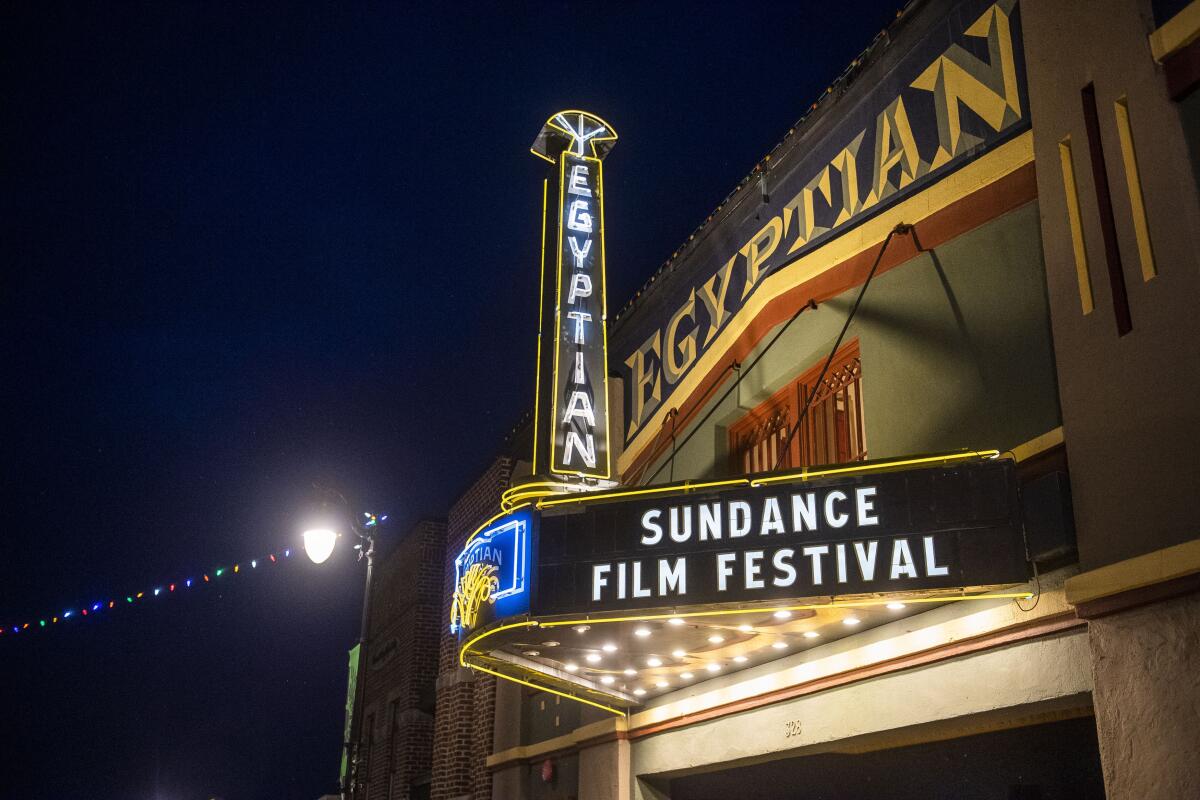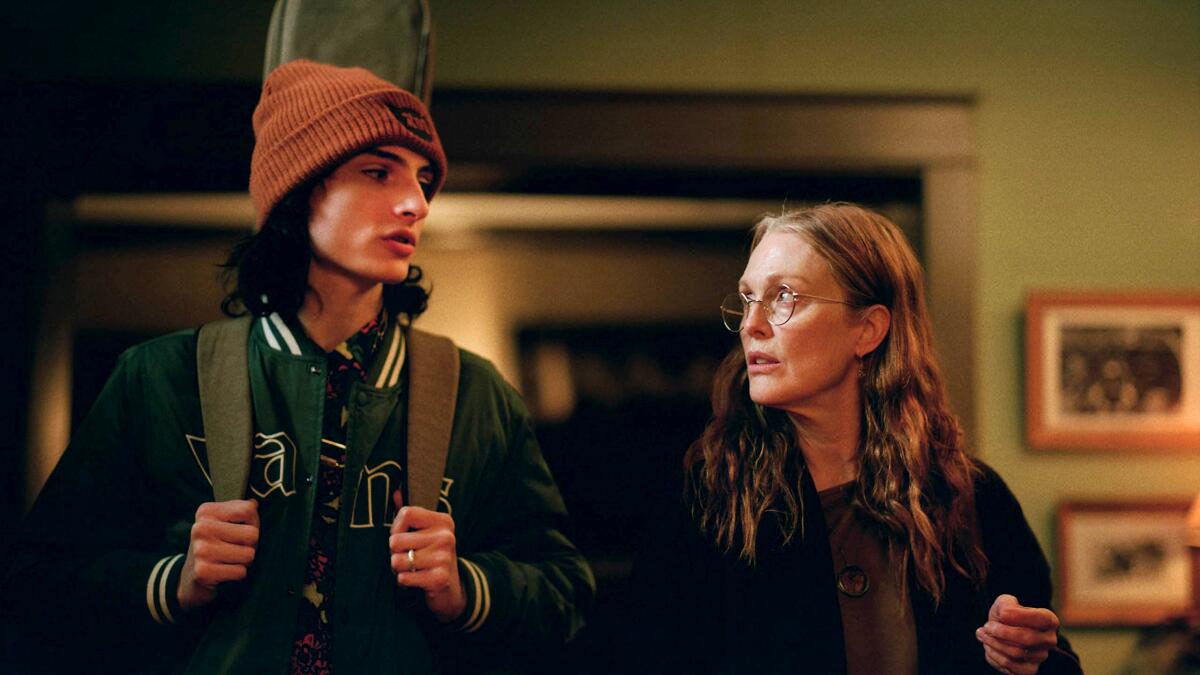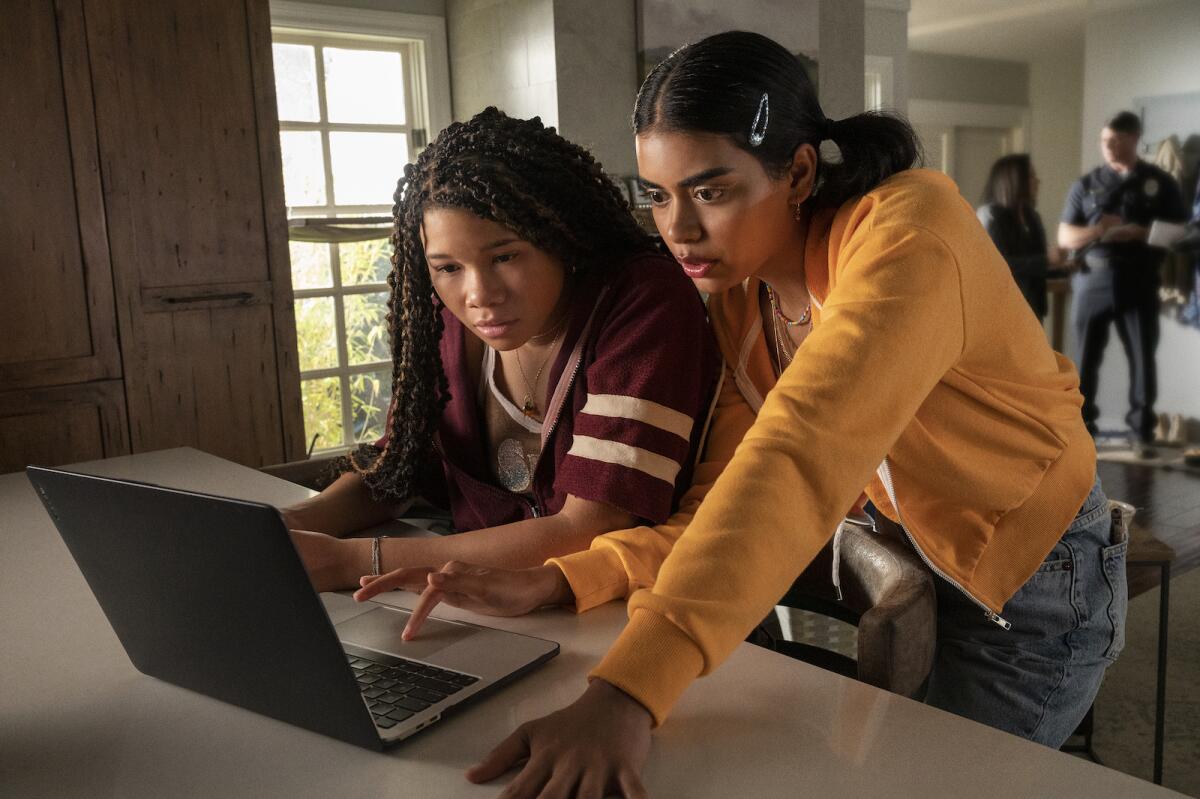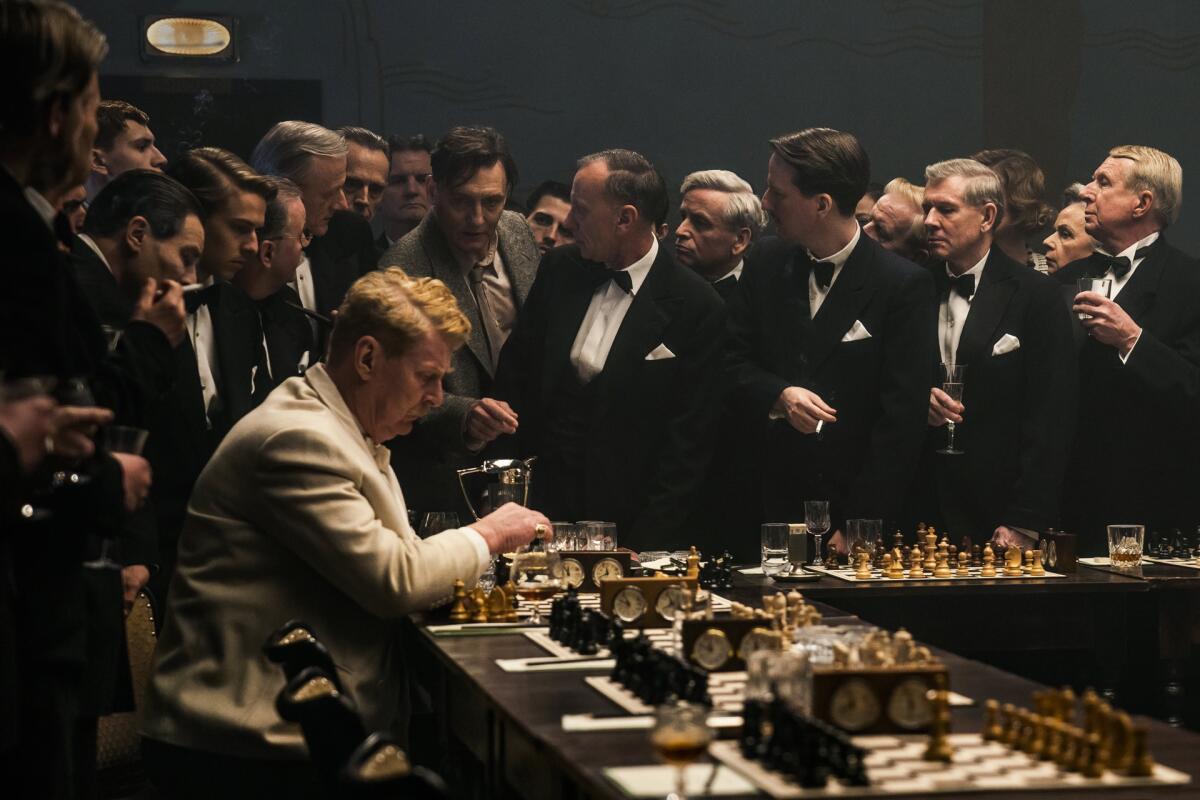The return to in-person Sundance â movies, snow and an eye to the future

Hello! Iâm Mark Olsen. Welcome to another edition of your regular field guide to a world of Only Good Movies.
Only good movies
Get the Indie Focus newsletter, Mark Olsen's weekly guide to the world of cinema.
You may occasionally receive promotional content from the Los Angeles Times.
The Sundance Film Festival launched Thursday, and I am on the ground in Park City, Utah, with a team of colleagues for the first time since pre-pandemic 2020.
Editor Matt Brennan is overseeing a daily newsletter from the festival, a handy guide if you are there or keeping tabs on things from afar.
As a preview to this yearâs event, I examined an existential question â Whatâs the point? In 2023, what is Sundance for?
And while the box office for arthouse movies has continued to struggle, and streaming services seem to be in a transitional moment between a hunger for acquiring new movies and producing movies of their own, the responses I got were unexpectedly â however guardedly â optimistic.
As Howard Cohen, co-president of the distributor Roadside Attractions said, âI donât think itâs an existential moment, because I think that indie films will survive. But certainly old models are being, letâs say, heavily reevaluated.â
And this yearâs festival just might provide some answers to what the future of independent film might be, to how the industry adjusts itself and what it is that new audiences wanting something different might be looking for. As John Sloss, founder of Cinetic Media put it, âThe short answer is we donât know. We donât know how the theatrical experience is going to work for specialized movies and is that audience going to come back. I think to a certain extent, the distributors and this market will be the canaries in the coal mine about what the confidence is that that marketâs going to return. ⌠I think weâll learn a lot by what happens at the festival and in the immediate aftermath.â
Aside from filmmaker Nicole Holofcener declaring what she considers an acceptable size TV if you simply have to watch her movies on streaming â âItâs OK to watch mine on a large TV. Iâll say large. Sixty-five-inch, no less.â â I also got Sundance Institute CEO Joana Vicente to speak on what she sees as one of the truest values of the festival.
âIt kind of sets the tone for the year,â Vicente said. Itâs this opportunity to spotlight all of the amazing new voices, new films that the team is excited about. And we put them out there and itâs like we are setting culture. We are really creating the conversation.â
Ryan Faughnder, in his newsletter the Wide Shot, took a look at the likely sales potential at this yearâs festival, with films such as âCat Person,â âEileenâ and âTheater Campâ all on the market.
Yet, as Ryan noted, it is likely that âDistributorsâ appetites are waning this year. Studios and streamers are pulling back on their spending as they adapt to shifting priorities in the industry. Buying the distribution rights to fancy awards contenders isnât a top focus for major entertainment companies right now, as finances tighten and streaming business proves to be more challenging than expected.â
Critic Justin Chang wrote a guide of his own, with six notable titles that audiences should keep an eye out for, including Raven Jacksonâs âAll Dirt Roads Taste of Salt,â Maite Alberdiâs âThe Eternal Memoryâ and C.J. âFieryâ Obasiâs âMami Wata.â
Dede Allen at the Academy. Lest anyone let long-distance Sundance FOMO get the better of them, know that while I am very happy to be in Utah and covering the festival, I am very upset to be missing this weekendâs program at the Academy Museum as part of their ongoing celebration of editor Dede Allen.
First up on Saturday is Arthur Pennâs 1975 âNight Moves,â starring Gene Hackman, Jennifer Warren and Melanie Griffith in one of her first major roles. The film is a bleak, despairing neo-noir that features one of the quintessential lines of â70s cinema, when Hackman answers the question of who is winning a football game by saying, âNobody. One sideâs just losing slower than the other.â (The movie also has an unexpected put-down about Ăric Rohmer movies.)
But Sundayâs screening of Warren Beattyâs 1981 âRedsâ is the real main event, showing in a new 35mm print. Arguably Beattyâs masterpiece, the film for which he won the directing Oscar, âRedsâ stars Beatty, Jack Nicholson and Diane Keaton (all three never looking better onscreen) and mixes romance, history and politics with a rare alchemy.
Enjoying this newsletter? Consider subscribing to the Los Angeles Times
Your support helps us deliver the news that matters most. Become a subscriber.
âWhen You Finish Saving The Worldâ
One of the hot titles from the 2022 Sundance Film Festival, âWhen You Finish Saving The Worldâ is the debut as writer-director from Jesse Eisenberg, adapted from a podcast he also wrote. Though he doesnât appear on-onscreen, the anxious self-aware energy of Eisenbergâs best performances courses through the film, as Finn Wolfhard plays Ziggy, a highschooler and aspiring musician pushed by his social activist mother Evelyn (Julianne Moore) to make something more of himself. The film is in theaters now.
For The Times, Robert Abele wrote, âthe wincingly funny competes awkwardly with the emotional framework. Itâs a problem Eisenberg will inevitably get better at the more he writes and directs movies with these types of thematically complicated characters. But for now it feels like a story caught between the punishing bite of social satire and a sensitive indie. ⌠As a micro case study about some acutely flawed 21st century strivers, âWhen You Finish Saving the Worldâ has its well-turned moments, but when you want it to be gloriously messy about families and human interactions, it stays resolutely in lab mode.â
For the AP, Lindsey Bahr wrote, âThe heart of the film is the aching missed connections between mother and son. They have, they know, so much to be grateful for and yet canât seem to rise above their superficial differences. Itâs discontented suburban white people, sure, but Eisenberg keeps it fresh, modern and piercing. ⌠He has not made a flashy art film, but itâs a smart, biting and occasionally sweet character piece about unlikable characters that you still may want to root for, because, though it may be hard to admit, theyâre not so different from us.â
For Little White Lies, Hannah Strong wrote, âThereâs a sense that communicating better as a family would help both mother and son change their ways, and understand that the key to helping others is learning to stop putting yourself first. Itâs a valuable message to communicate, and Eisenberg skewers the narcissistic streak of his main characters fairly well, but it feels like thereâs something ultimately missing from the story. ⌠Even with a flawed debut, Eisenberg shows promise as a director, and clearly has interesting stories that he wants to tell. Itâs just the execution which needs a little work.â
For Variety, Amy Nicholson wrote, âEisenberg has made a satire that exists in shades of beige, as though he challenged himself to remake âBrave New Worldâ in burlap. (Heâs even invented his own slang â a challenge isnât âdifficult,â itâs âtera-hard.â) His characters couldnât be angrier, but they pride themselves in trying not to scream. Here, people wage emotional warfare by asking others to whisper, or by passive-aggressively plotting ways to feel disappointed â i.e. feel superior. When Evelyn agrees to give Ziggy âfive secondsâ to grab his backpack so he can hitch a ride to school, she counts to five and leaves without him, presumably telling herself that heâs the jerk.â

Enjoying this newsletter? Consider subscribing to the Los Angeles Times
Your support helps us deliver the news that matters most. Become a subscriber.
âMissingâ
A follow-up to the 2018 hit âSearchingâ (which premiered at Sundance), the new film âMissingâ is directed by Nick Johnson and Will Merrick, who also wrote the screenplay from a story by the original filmâs writers Sev Ohanian and Aneesh Chaganty. Where the first movie was about a father searching for a lost daughter, this time a daughter June (Storm Reid) goes looking for her missing mother, Grace (Nia Long). The conceit that all the action takes place on screens is still in place. The movie is in theaters now.
For Tribune News Service, Katie Walsh wrote, âJohnson and Merrick use the format set by âSearching,â but the technological, cultural and media landscape has evolved, including the fire hose of streaming true crime content. ⌠The suspenseful âMissingâ plows through nearly two hours of shocking plot twists at a breakneck pace. And while itâs entertaining to be sure, it also takes on a somber tone as it reckons with grief, loss and intimate partner violence in a way thatâs very real, backed up by headlines ripped from the news, and yes, those true crime series and TikToks that are so very compelling.â
For the New York Times, Amy Nicholson wrote, ââMissingâ captures the constant distractions of the modern age. Pop-up windows continually tug at Juneâs attention. However, the filmâs more engaging moments tap into the older cyber nostalgia of text-based adventure games from the 1970s, where problems are solved by typing the right command: Enter cave. Brandish sword. Write âCan I see the security camera?â into on online English-Spanish translator while on the phone with your motherâs hotel. Itâs not exactly riveting to watch June download and install WhatsApp so that she can video call Colombia. Yet, thereâs some pleasure in a brains-over-brawn quest that flatters us to fancy that we might be clever enough to solve it ourselves, despite giggles that arise when Julian Scherleâs score swells so portentously for Juneâs digital breakthroughs that youâd think Conan had smote an army. Even goofier is an emotional scene that builds to June pledging this teary promise to her vanished mother: âIâll stop making fun of you for using Siri for everything.ââ
For the Guardian, Benjamin Lee wrote, âLike the first, itâs propulsive and involving and, at times, genuinely innovative but in upgrading our lead to someone who is that much more skilled behind a keyboard, the film relies on scenes of extreme intelligence often directly followed by scenes of staggering stupidity in order to keep certain developments under wraps. Reid is a compelling and commanding protagonist and the makers understandably want us to see more of her but that often means that she just happens to keep leaving on her webcam or her FaceTime just so we, the audience, can see her react. Moments of far-fetched, sigh-at-the-screen incredulity are also met by an overdose of sentimentality, something that felt less gloopy in the original, which was more elegant in its estranged parent-daughter drama. Brevity is always a welcome quality for a B-movie such as this and at almost two hours, the flaws of âMissingâ are given too much space to distract.â

âChess Storyâ
Directed by Philipp StĂślzl from a screenplay by Eldar Grigorian, adapting the 1943 novella âThe Royal Gameâ by Stefan Zweig, âChess Storyâ is set during Nazi Germanyâs annexation of Austria. Dr. Josef Bartok (Oliver Masucci) initially thinks that the political climate wonât affect his life, until he is separated from his family and finds himself in a game of wits attempting not to provide information to a Gestapo officer. The film is in theaters now.
For The Times, Michael Rechtshaffen wrote, âAlthough the blandly nondescript title doesnât exactly suggest the promise of deep intrigue, Philipp StĂślzlâs âChess Storyâ masterfully confounds expectations as a tautly calibrated, intricately constructed Chinese puzzle of a period drama set during Nazi Germanyâs annexation of Austria. ⌠Eighty years later, âChess Storyâ and all its variations continue to serve as a reminder of the importance of remaining in the game, no matter how seemingly futile, until the last possible move.â

Only good movies
Get the Indie Focus newsletter, Mark Olsen's weekly guide to the world of cinema.
You may occasionally receive promotional content from the Los Angeles Times.




